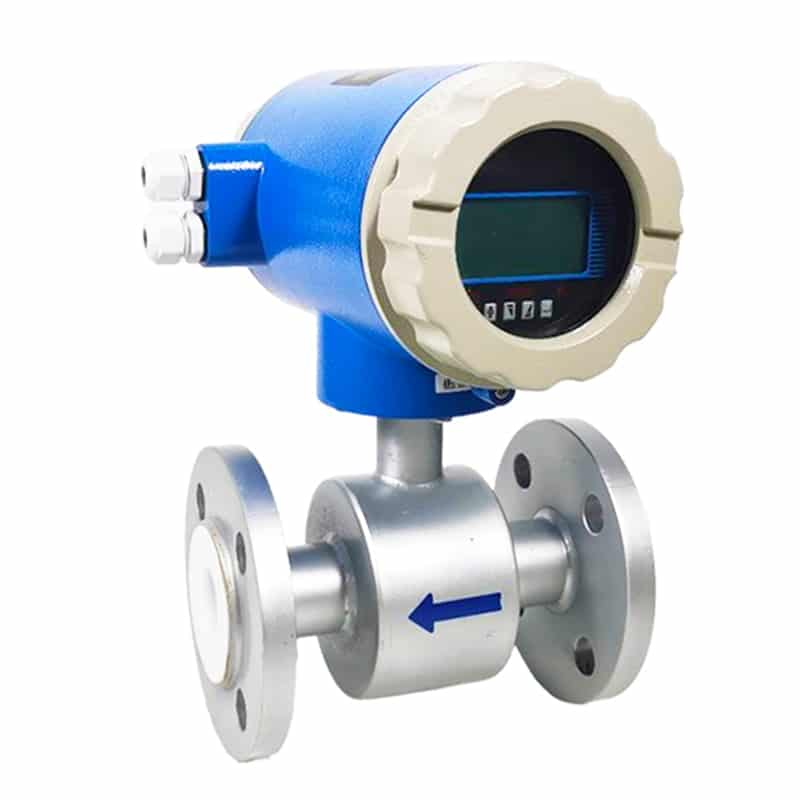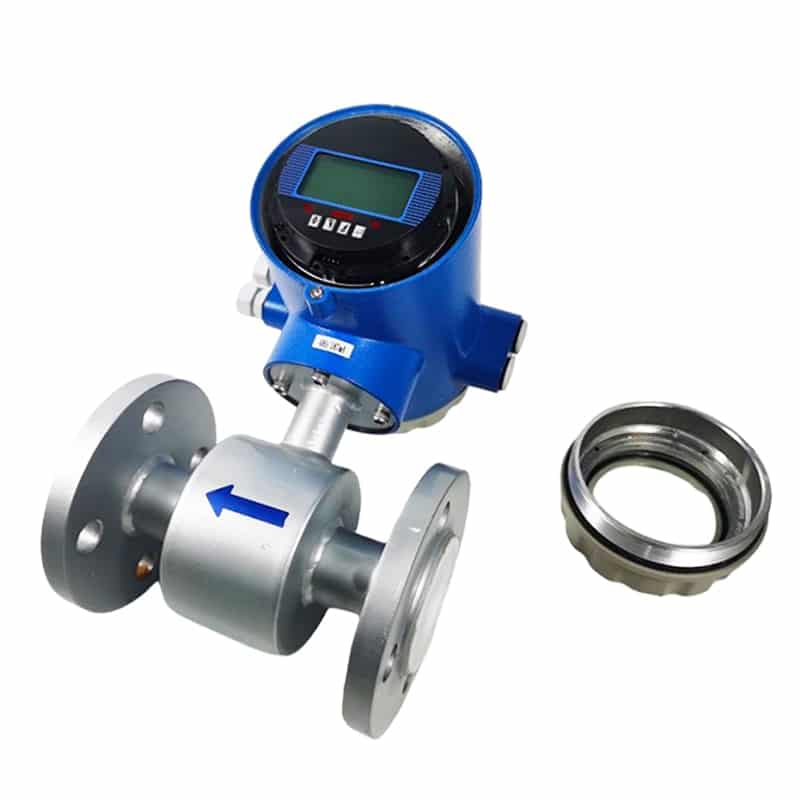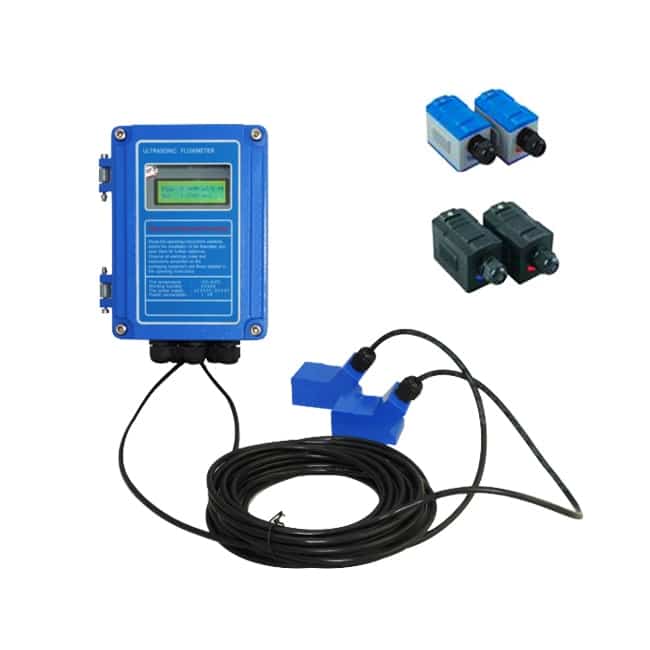Both ultrasonic and magnetic flow meter is commonly used to measure the flow of liquids, but they operate based on different principles and are suitable for different applications.
Ultrasonic and Magnetic Flow Meters Working Principle
Magnetic flow meter working principle:
Magnetic flow meters are based on Faraday’s Law of Electromagnetic Induction, which states that when an electrically conductive liquid passes through a magnetic field, it generates an electric potential proportional to the flow rate. The electrodes capture this electromotive force, thus calculating the flow rate and flow volume of the liquid. The method is only applicable to conductive liquids.


Ultrasonic flow meter working principle:
Ultrasonic flow meter using acoustic wave propagation time difference method, sound waves in the downstream and counter-current direction of the propagation speed is different, through the measurement of sound waves in the time difference between the two to calculate the flow rate. Applicable to a variety of conductive and non-conductive liquids.


Accuracy of Ultrasonic and Magnetic Flow Meters
Typical accuracy ranges for magnetic flow meters are ±0.2% to ±0.5% for conductive liquids such as wastewater and slurry flow meters, where it exhibits very high accuracy.
Ultrasonic flowmeters, with a typical accuracy range of ±1% to ±2%, can be affected by air bubbles or solid particles in the liquid, but are still a valid choice for non-conductive liquids such as clear water and oil.
Limitations of Ultrasonic and Magnetic Flow Meters
Magnetic flow meter:
- Conductive liquids only: Cannot measure non-conductive liquids such as oils and gases.
- High cost: Especially when dealing with corrosive or complex liquids, the choice of sensor material adds to the cost.
- Installation limitations: A certain length of straight pipe section is required to ensure accurate measurement, and the pipe must be filled with liquid.
Ultrasonic flow meter:
- Affected by air bubbles and solid particles: When the liquid contains too many air bubbles or solid particles, the measurement accuracy is reduced.
- High requirements on the pipeline: The pipeline material, thickness and installation accuracy requirements, otherwise it may affect the signal transmission and measurement accuracy.
- Lower precision: Compared with the magnetic flow meter, the ultrasonic flow meter is slightly less accurate.
Comparison of Ultrasonic and Magnetic Flow Meters
| Parameter | Magnetic Flow Meter | Ultrasonic Flow Meter |
| Output Signal | 4-20mA, Pulse signal | 4-20mA, Pulse signal, RS485 |
| Operating Temperature | -25°C to 120°C | -40°C to 150°C |
| Pressure Range | Up to 16 MPa | Up to 40 MPa |
| Flow Rate Range | 0.1 m/s to 10 m/s | 0.03 m/s to 12 m/s |
| Power Supply | 220V AC or 24V DC | 220V AC or 24V DC |
| Response Time | 0.5s to 1s | Less than 0.1s |
Application of Ultrasonic and Magnetic Flow Meters
Ultrasonic Flow Meter Applications:
- Clean water supply: For flow measurement in municipal water supply systems.
- Oil and gas: To measure the flow of oil, petroleum and other non-conductive liquids.
- HVAC systems: Monitoring water flow in heating and cooling systems.
- Chemical industry: For clean or lightly contaminated chemicals.
Magnetic Flow Meter Applications:
- Wastewater treatment: For measuring the flow of wastewater, slurries and other conductive liquids.
- Food and beverage: For flow control of conductive liquids such as juice, milk or slurry.
- Mining industry: To measure the flow of slurry, suitable for harsh environments.
- Paper industry: To monitor the flow of pulp and slurry.
Summary
Ultrasonic flow meters are ideal for non-conductive or clean liquids, while magnetic flow meters excel with conductive liquids in challenging environments. The right choice depends on the type of fluid and application needs.
Apure offers a wide range of ultrasonic and magnetic flow meters to suit various industrial applications. Contact us for more information!
